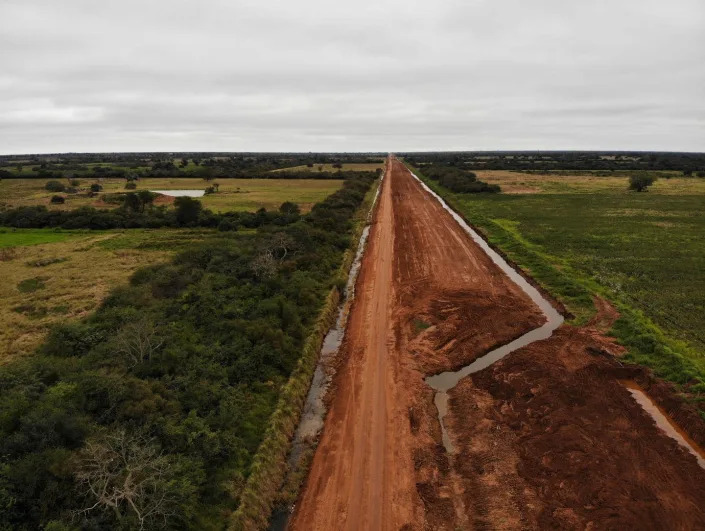It Turns Out Orcas Can — And Do — Kill And Eat Blue Whales
Its sheer size apparently isn’t enough to save a blue whale from becoming dinner for a hungry pod of orcas (aka killer whales).
In a paper published last week in the journal Marine Mammal Science, researchers shared “the first documentation of killer whales killing and eating blue whales: two individuals killed, 16 days apart in 2019, and a third in 2021.”
In the past, there have been reports of orcas chasing blue whales, but this the first official scientific record of orcas successfully hunting, killing and eating them, according to The Guardian.
The incidents all happened in Australia’s Bremer Bay, where female-led orca groups worked together to take down their large prey.
In two of the three cases, the blue whales — which are the largest animals on Earth — weren’t fully grown: one was a young calf and one was a juvenile around a year old. But the third blue whale the orcas ate was a healthy adult between 60 and 70 feet long, more than twice the size of the largest orcas, which only get to be about 30 feet, according to National Geographic.
“When we arrived about 14 killer whales were attacking the blue in [230-ft deep] waters, with the female killer whales leading the attack,” Isabella Reeves, a PhD candidate at Australia’s Flinders University and one of the study’s authors, told New Atlas.
That attack involved some of the orcas repeatedly slamming into the blue whale and biting off chunks of its flesh, while others went for its head and still another took the liberty of going for the tongue ― a nutrient-dense organ that orcas apparently love. Ultimately, about 50 orcas joined in the smorgasbord.
While you may have trouble convincing a blue whale of this, the researchers believe that the orca attacks may actually be a positive sign overall, indicating that blue whale numbers are rebounding after being driven to near-extinction by the whaling industry in the early 20th century.
“Maybe what we’re starting to see now is how the ocean used to be before we took out most of the large whales,” Robert Pitman, an ecologist at Oregon State University and another of the study’s authors, told The Guardian. “As some of these populations continue to recover, we have a better chance to see how normal marine ecosystems function.”
In the meantime, orcas aren’t the only animals enjoying the feast, Gizmodo reported. In the case of the adult whale, the carcass also became a buffet for sharks and scavenging seabirds.
This article originally appeared on HuffPost and has been updated.
Orcas Are Able to Kill and Eat Blue Whales, Scientists Confirm
In March 2019, scientists studying whales near southwestern Australia stumbled on a supersize spectacle that few had seen before — a pod of orcas viciously attacking a blue whale.
Over a dozen orcas surrounded the mighty animal. They had already bitten off its dorsal fin, and the animal was unable to evade the fast and agile predators. The water ran red with the blood of the massive creature, and chunks of its flesh were floating all around. The scientists observed one orca force its way into the blue whale’s mouth and feast on its tongue. It took an hour for the orcas to kill the blue whale, and once they did, about 50 other orcas showed up to devour the carcass.
Sign up for The Morning newsletter from the New York Times
Orcas, also known as killer whales despite being members of the same family as dolphins, are apex predators known to feed on nearly every species of large whale. But they typically go after calves rather than adults. This was the first time orcas had been observed successfully killing and eating an adult blue whale.
The attack was the first of three such events that were witnessed from 2019 through 2021. These events, described in a paper published last week in the journal Marine Mammal Science, have put to rest a long-standing debate among scientists about whether orcas could make a meal out of an adult blue whale.
A pod of orcas taking down a blue whale is “the biggest predation event on Earth, maybe the biggest one since dinosaurs were here,” said Robert Pitman, a marine ecologist at Oregon State University and an author of the paper.
Anecdotal evidence that orcas are capable of making a meal out of an adult blue whale has long existed, but it wasn’t until 2019 that scientists were able to confirm this through firsthand observation.
“Upon approach, we were astounded at what we were seeing,” said Rebecca Wellard, founder and lead researcher at Project ORCA, who was among the researchers who witnessed the 2019 attack. “When you come across a unique event like this, I think it takes a while to process just what you are seeing.”
Blue whales, the largest creatures that have ever lived, can grow up to 110 feet in length, but the animal being attacked was only 70 feet long, which raised questions about whether it was a younger blue whale. But Wellard and her team were able to photograph the blue whale before the orcas tore it to shreds. Based on its appearance, as well as the location and time of year it was photographed, they concluded that it was an adult pygmy blue whale, a subspecies that is genetically similar to the most massive of the blue whales, but with a smaller size and other distinguishing characteristics.
Pygmy blue whales reach lengths of up to 79 feet, so this animal was most likely an adult.
“I think a full-grown pygmy blue whale could be mistaken for a regular blue whale that was not quite mature,” said Erich Hoyt, a research fellow with Whale and Dolphin Conservation and author of “Orca: The Whale Called Killer.” He was not involved in the research.
Hoyt said the fact that the orcas were able to successfully hunt the pygmy blue whale served as strong evidence that they could do the same to even the most massive blue whales. “Blue whales are fast, but orcas are faster,” he said.
The event that Wellard and her team witnessed took place off the coast of Bremer Bay, a biologically rich region where large numbers of orcas, blue whales and other cetaceans can be seen during certain times of the year.
“The killer whales we research off Bremer Bay are rewriting the textbook on what we thought we knew about this species,” Wellard said.
Photographers aboard whale-watching boats in the region have documented two other orca attacks on blue whales since the attack observed in 2019. Over a dozen orcas coordinated to carry out both attacks on juvenile blue whales. While scientists had observed orcas with dead blue whale calves in the past, such attacks had not yet been documented from start to finish.
Although the predation of blue whales by orcas is gruesome, scientists say it could be a positive sign for the health of whale species in the area. The whaling industry nearly drove blue whales into extinction, and the fact that enough of them now exist to be preyed on by orcas may hint at population growth.
“What we could be seeing now is a return to ‘normalcy’ as populations of large whales, and their predators, continue to recover,” Wellard said. “It may just have been a matter of time before an observation like this was made. Nonetheless, these hunts signal a positive step for both species’ populations.”
© 2022 The New York Times Company















